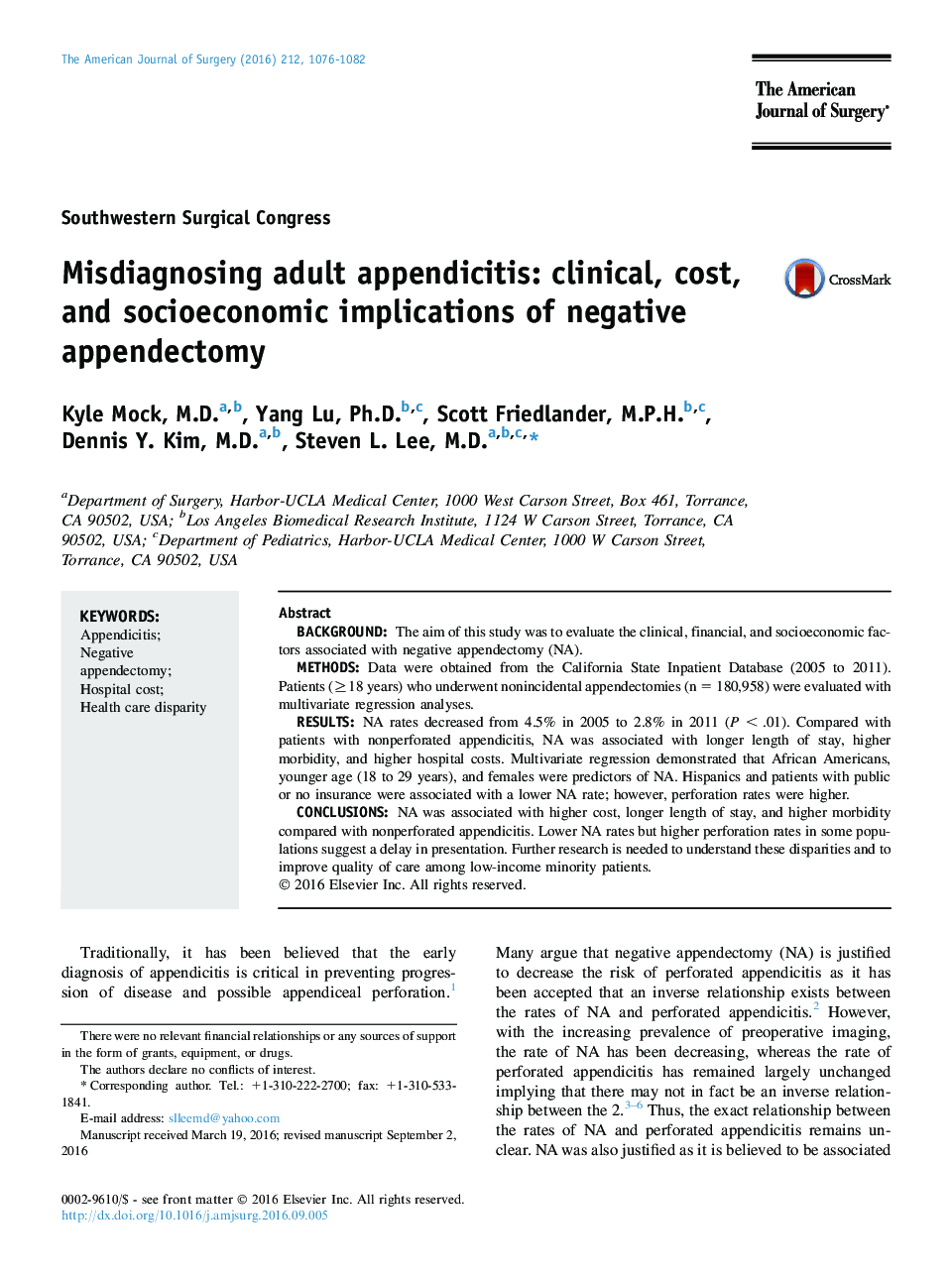| Article ID | Journal | Published Year | Pages | File Type |
|---|---|---|---|---|
| 5731332 | The American Journal of Surgery | 2016 | 7 Pages |
BackgroundThe aim of this study was to evaluate the clinical, financial, and socioeconomic factors associated with negative appendectomy (NA).MethodsData were obtained from the California State Inpatient Database (2005 to 2011). Patients (â¥18 years) who underwent nonincidental appendectomies (n = 180,958) were evaluated with multivariate regression analyses.ResultsNA rates decreased from 4.5% in 2005 to 2.8% in 2011 (P < .01). Compared with patients with nonperforated appendicitis, NA was associated with longer length of stay, higher morbidity, and higher hospital costs. Multivariate regression demonstrated that African Americans, younger age (18 to 29 years), and females were predictors of NA. Hispanics and patients with public or no insurance were associated with a lower NA rate; however, perforation rates were higher.ConclusionsNA was associated with higher cost, longer length of stay, and higher morbidity compared with nonperforated appendicitis. Lower NA rates but higher perforation rates in some populations suggest a delay in presentation. Further research is needed to understand these disparities and to improve quality of care among low-income minority patients.
